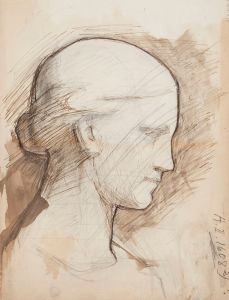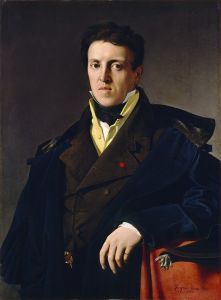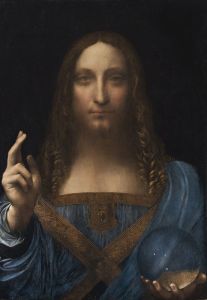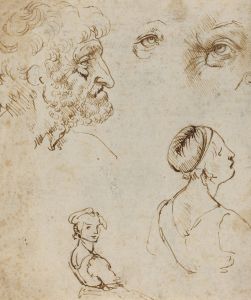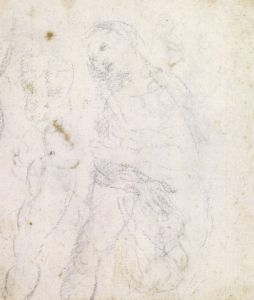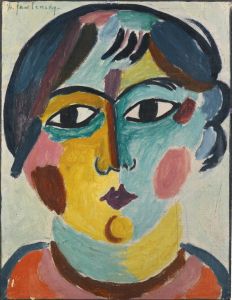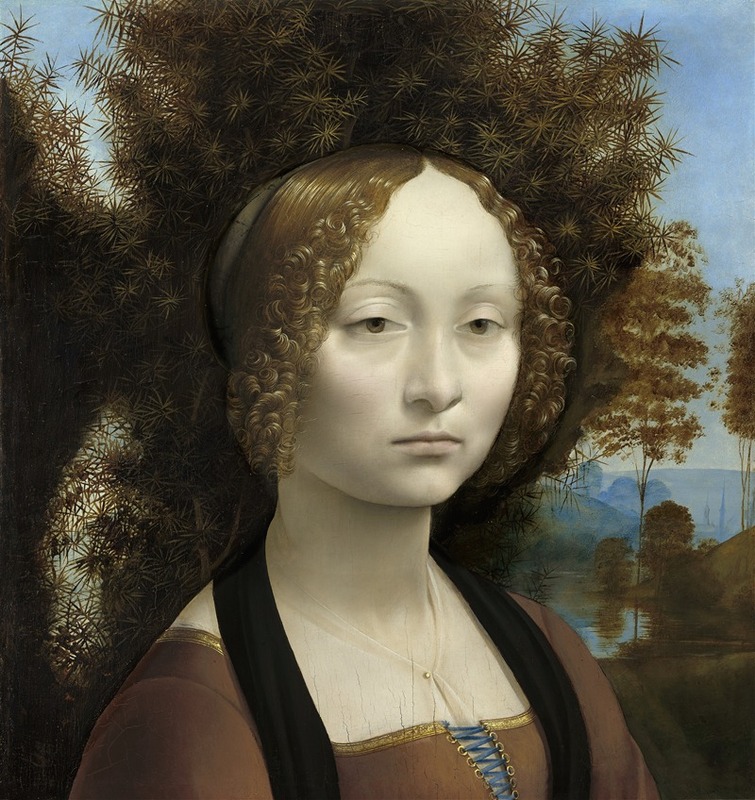
Ginevra de’ Benci
A hand-painted replica of Leonardo da Vinci’s masterpiece Ginevra de’ Benci, meticulously crafted by professional artists to capture the true essence of the original. Each piece is created with museum-quality canvas and rare mineral pigments, carefully painted by experienced artists with delicate brushstrokes and rich, layered colors to perfectly recreate the texture of the original artwork. Unlike machine-printed reproductions, this hand-painted version brings the painting to life, infused with the artist’s emotions and skill in every stroke. Whether for personal collection or home decoration, it instantly elevates the artistic atmosphere of any space.
Ginevra de’ Benci is a renowned portrait painting by the Italian Renaissance artist Leonardo da Vinci. Created around 1474–1478, it is one of Leonardo's earliest known works and is notable for being the only painting by Leonardo on public display in the Americas. The portrait is housed in the National Gallery of Art in Washington, D.C.
The subject of the painting, Ginevra de’ Benci, was a young Florentine noblewoman, known for her beauty and intelligence. She was part of a prominent family in Florence, and her father was a wealthy banker. The painting is believed to have been commissioned to commemorate her marriage to Luigi di Bernardo Niccolini in 1474, although some scholars suggest it might have been commissioned for her engagement or another significant event in her life.
Leonardo's portrayal of Ginevra is both innovative and striking. The painting is executed in oil on a wooden panel and measures approximately 38.8 cm by 36.7 cm. Ginevra is depicted in a three-quarter view, a format that was relatively new at the time and showcased Leonardo's skill in rendering human anatomy and expression. Her face is serene and introspective, with a pale complexion that contrasts with the dark juniper bush in the background. The juniper bush is significant as it is a visual pun on Ginevra’s name; in Italian, "ginepro" means juniper.
The background of the painting is a simple landscape, which was a departure from the more elaborate backgrounds typical of portraits from that era. This simplicity draws attention to Ginevra herself and highlights Leonardo's interest in capturing the psychological depth of his subjects. The painting is also notable for its use of sfumato, a technique that Leonardo pioneered, which involves the delicate blending of colors and tones to create a soft transition between light and shadow.
On the reverse side of the panel, there is an emblematic image of a juniper sprig encircled by a wreath of laurel and palm, with the Latin motto "Virtutem Forma Decorat" ("Beauty adorns virtue"). This emblem further emphasizes the connection between Ginevra and the juniper, while also reflecting Renaissance ideals of virtue and beauty.
The painting has undergone several restorations over the centuries, which have helped preserve its delicate details. Despite these restorations, the portrait remains in remarkably good condition, allowing viewers to appreciate Leonardo's early mastery of portraiture.
Ginevra de’ Benci is a testament to Leonardo da Vinci's innovative approach to portrait painting and his ability to capture the essence of his subjects. It stands as an important work in the history of art, reflecting the cultural and artistic values of the Renaissance period. The painting continues to be a subject of study and admiration, offering insights into Leonardo's development as an artist and his contributions to the art of portraiture.





